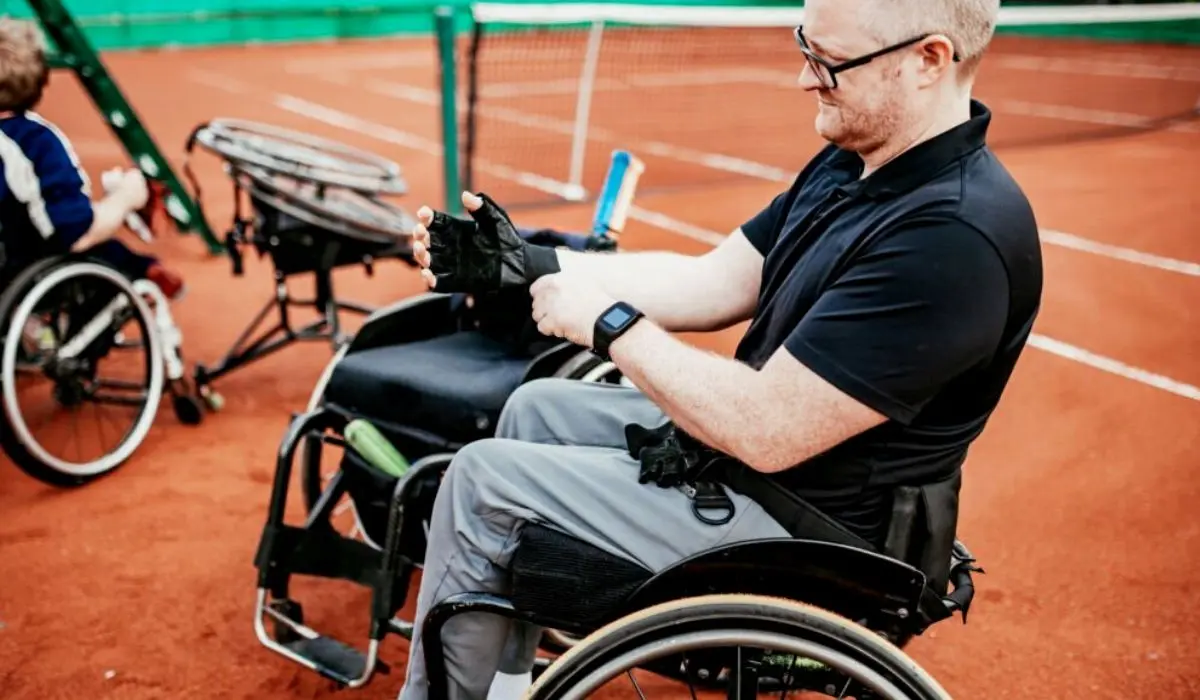Sports are a worldwide passion that crosses all barriers and unites people. Sports participation can help people with disabilities not only stay physically active but also feel empowered, express themselves, and become more integrated into their communities.
Barriers that earlier prevented participation are being broken down as a result of the development of assistive technology and adaptive sports programs. This article explores the world of adaptive sport, shedding light on how innovation is reshaping the landscape of sport inclusivity.
Assistive Devices For Adaptive Sports – Benefits & Uses
Here are some of the assistive devices for adaptive sports:
1] Wheelchair Basketball And Tennis
In the world of adaptable sports, wheelchair tennis, and basketball have become immensely popular. Sports wheelchairs that are specifically made for speed, agility, and manoeuvrability are used to play these sports. Athletes can move around the court with accuracy thanks to this chair’ angled wheels, which also provide stability and reactivity.

Anti-tip systems are often included in adaptive sports wheelchairs to prevent falls and injuries during intense gameplay. These tools expand the definition of athleticism by enabling players to demonstrate their abilities, agility, and competitiveness on an equal playing field.
2] Handcycles For Cycling
Many people find cycling to be an exhilarating sport, and people with lower limb limitations can get the same rush through handcycles. In order to move a handcycle, the rider uses arm power as opposed to leg pedalling. Athletes operate the bike by sitting in a recumbent position and turning the pedals with their upper body strength.
For people with paraplegia or lower limb amputations, these adaptive gadgets have opened up opportunities for long-distance cycling, road racing, and off-road adventures. Athletes can traverse a variety of terrain and compete at the highest level, thanks to the stability and speed of handcycles.
3] Prosthetic Running Blades For Track And Field
Thanks to the invention of prosthetic running blades, amputee athletes have increased their participation in track-field events. These blades are designed to work like a normal foot by acting as a spring and shock absorber.
On the track, blade runners have competed in sprints, long jumps, and marathons, accomplishing amazing achievements. The perception of what is feasible for athletes with limb differences has been challenged by this adaptive equipment, in addition to shattering records.
4] Sit-Skis For Adaptive Skiing
People with mobility issues are becoming more and more interested in adaptive skiing, and sit-skis have transformed the sport. Specialised sleds with moulded seats and ski parts are known as sit-skis. In order to manoeuvre downhill slopes, athletes use outriggers or poles while seated securely in the sledge.
Sit-ski’s innovative design enables anyone with lower limb impairment to enjoy the thrill of downhill skiing. Modern models allow for greater stability and manoeuvrability, allowing athletes to compete in both Alpine and Nordic skiing disciplines.
Also Check:- The Benefits Of Aquatic Rehabilitation Equipment
5] Wheelchair Rugby And Handcycling For Upper Limb Athletes
There are choices for those with upper limb disabilities, even though many adaptive sports are geared toward athletes with lower limb impairments. Wheelchair rugby, commonly referred to as “quad rugby” or “murderball,” is a full-contact, fast-paced sport that is played by people with various degrees of quadriplegia. Athletes manoeuvre the court and tactically score points while using strengthened wheelchairs to carry and pass a ball.
Handcycling, as mentioned earlier, is another sport that involves upper body strength for propulsion. Handcycles are often used by athletes with lower limb disabilities, although a person with poor hand function can participate with modifications such as power-assisted handcycles.
6] Sports Prosthetics For Multiple Disciplines
Athletic prosthetics have advanced significantly, offering amputee athletes specialised options for a range of athletics activities. These prosthetics are made to improve stability, balance, and performance. For instance, prosthetic limbs designed specifically for running have a natural gait and an efficient energy return, while those designed specifically for swimming have less water resistance.
7] Hearing Impaired Devices In Sports
Athletes who are deaf or have hearing impairments are not being forgotten in the realm of adaptive sports. These athletes can compete successfully thanks to assistive technologies like hearing aids with moisture-resistant characteristics or bone-conduction hearing aids.
Final Remarks
The world of adaptive sports has undergone substantial change as a result of advancements in assistive technology and the constant commitment of athletes with impairments. These gadgets are more than simply tools; they encourage dreams by breaking down barriers and fostering a sense of empowerment.